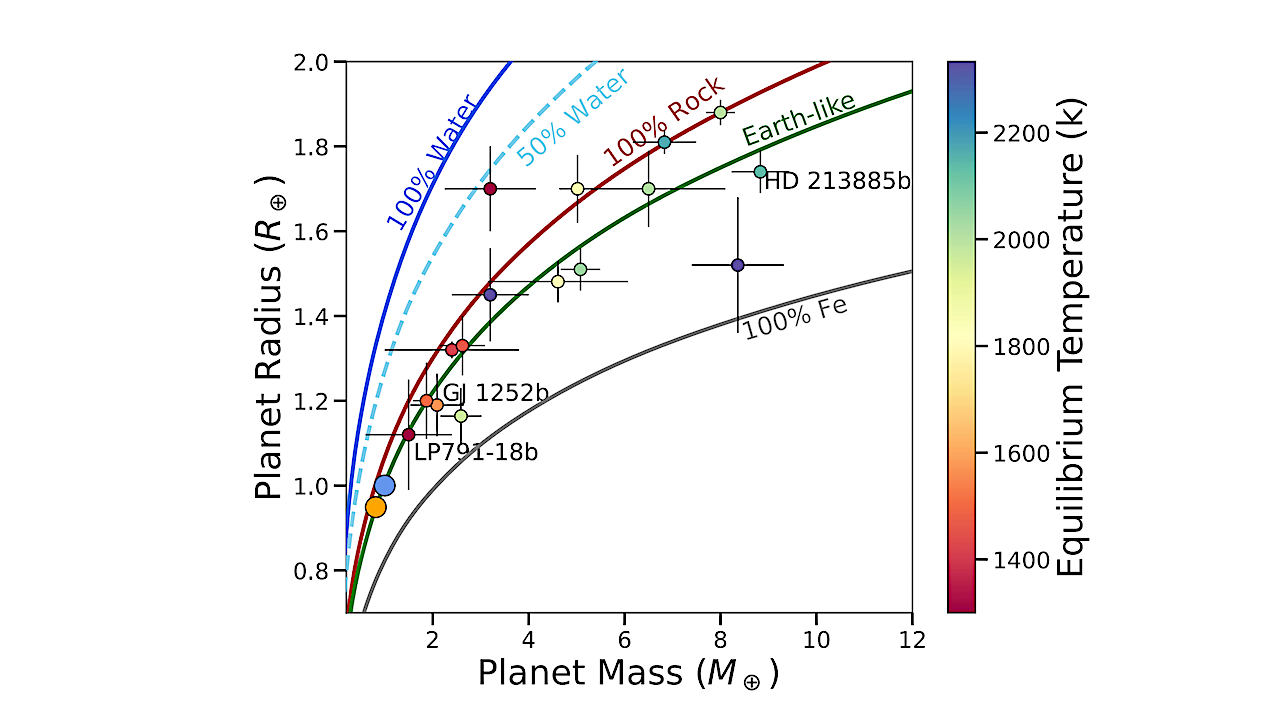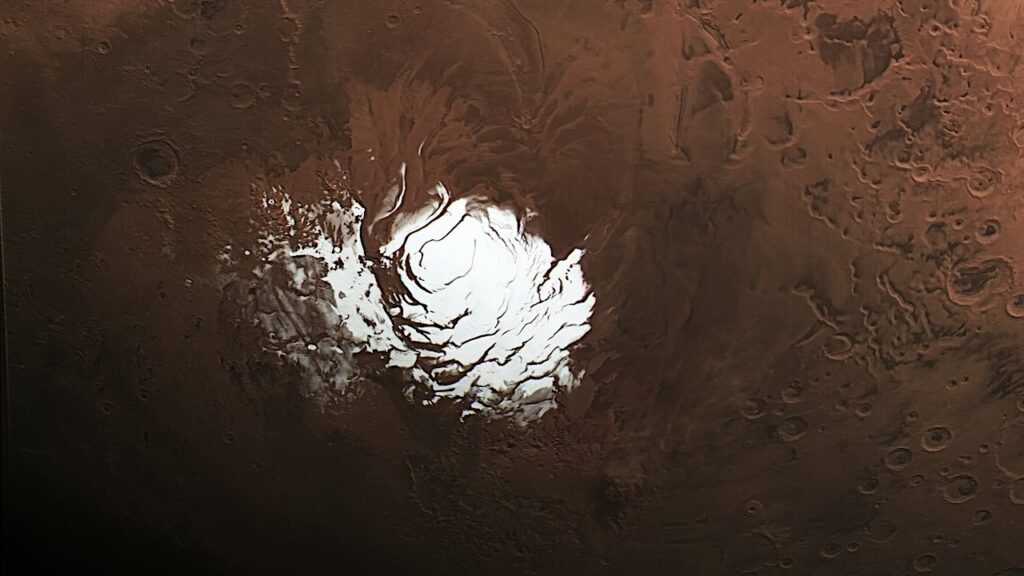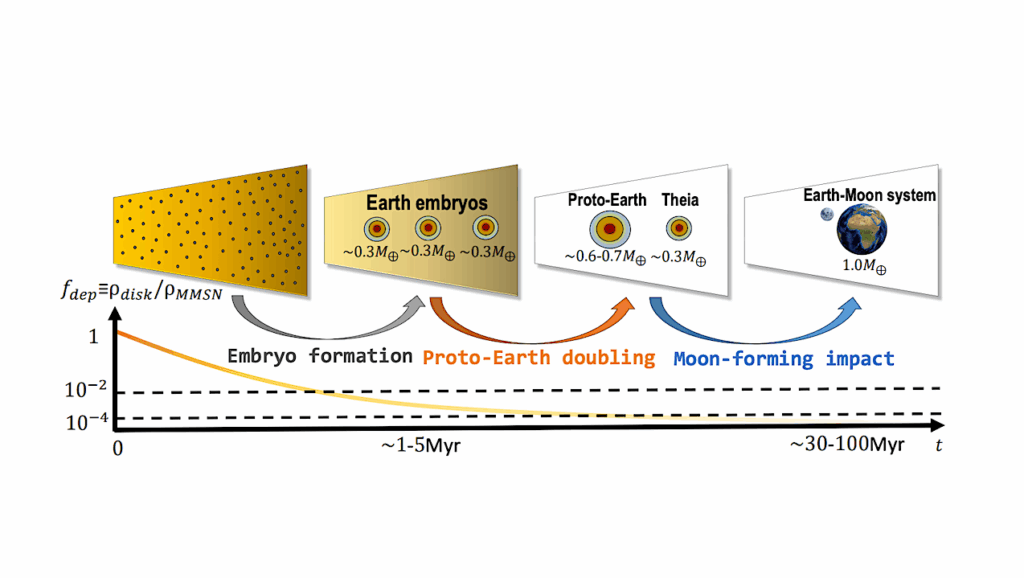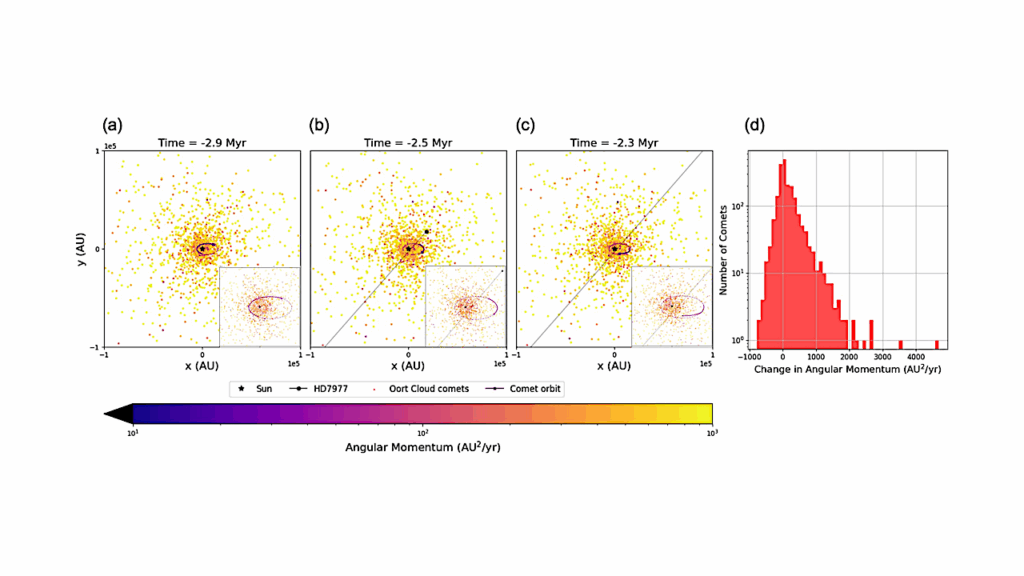Surface Pressure Impact On Nitrogen-dominated USP Super-Earth Atmospheres

In this paper, we compare the chemistry and the emission spectra of nitrogen-dominated cool, warm, and hot ultra-short-period (USP) super-Earth atmospheres in and out of chemical equilibrium at various surface pressure scenarios ranging from 0.1 to 10 bar.
We link the one-dimensional VULCAN chemical kinetic code, in which thermochemical kinetic and vertical transport and photochemistry are taken into account, to the one-dimensional radiative transfer model, PETITRADTRANS, to predict the emission spectra of these planets. The radiative-convective temperature-pressure profiles were computed with the HELIOS code.
Then, using PANDEXO noise simulator, we explore the observability of the differences produced by disequilibrium processes with the JWST. Our grids show how different surface pressures can significantly affect the temperature profiles, the atmospheric abundances, and consequently the emission spectra of these planets.
We find that the divergences due to disequilibrium processes would be possible to observe in cooler planets by targeting HCN, C2H4, and CO, and in warmer planets by targeting CH4 with HCN, using the NIRSpec and MIRI LRS JWST instruments. These species are also found to be sensitive indicators of the existence of surfaces on nitrogen-dominated USP super-Earths, providing information regarding the thickness of these atmospheres.

Jamila Chouqar, Jacob Lustig-Yaeger, Zouhair Benkhaldoun, Andrew Szentgyorgyi, Abdelhadi Jabiri, Abderahmane Soubkiou
Comments: 12 pages
Subjects: Earth and Planetary Astrophysics (astro-ph.EP)
Cite as: arXiv:2304.08690 [astro-ph.EP] (or arXiv:2304.08690v1 [astro-ph.EP] for this version)
https://doi.org/10.48550/arXiv.2304.08690
Focus to learn more
Journal reference: Monthly Notices of the Royal Astronomical Society, Volume 522, June 2023, Pages 648-659
Related DOI:
https://doi.org/10.1093/mnras/stad1034
Focus to learn more
Submission history
From: Jamila Chouqar
[v1] Tue, 18 Apr 2023 01:53:58 UTC (1,912 KB)
https://arxiv.org/abs/2304.08690
Astrobiology,








